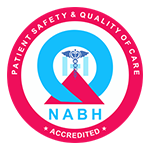If you’ve ever felt tired after climbing a flight of stairs, imagine your poor kidneys trying to keep up when they’re already struggling with chronic kidney disease (CKD). Now, throw anemia into the mix, and your body is basically running on "low battery mode" all the time. CKD anemia treatment is no joke; it’s one of the most frustrating complications for patients, doctors, and, frankly, the kidneys themselves.
But here’s the hot question in nephrology today: HIF stabilizers vs EPO; can HIF (Hypoxia-Inducible Factor) stabilizers replace the long-standing hero, Erythropoietin (EPO), in treating anemia in CKD?
Let’s break it down in a way that even your tired red blood cells would understand.
How does CKD cause anemia? Well, type of anemia in CKD is mostly normocytic and normochromic. It’s like Netflix buffering in the middle of your favorite show; super annoying and slows everything down.
Normally, your kidneys produce erythropoietin (EPO), a hormone that signals the bone marrow to produce red blood cells (RBCs). But in CKD, damaged kidneys are too busy struggling to filter toxins and forget to send that “make more RBCs” signal. The result? Fewer RBCs, lower hemoglobin, less oxygen transport, and a tired, breathless you.
Symptoms? Fatigue, pale skin, shortness of breath, and in some cases, looking like you’ve been binge-watching dramas all night; minus the actual fun.
Since the 1980s, recombinant human erythropoietin (rhEPO) and its analogs (also known as ESAs; Erythropoiesis-Stimulating Agents) have been the standard anemia in CKD treatment. You inject it, and just like that, red blood cell production is off to the races.
Sounds great, right? Well almost.
So, nephrologists started looking for a new hero, and this is where our HIF stabilizers show up with capes.
HIF stands for Hypoxia-Inducible Factor, which sounds complicated but is your body’s “low-oxygen alarm system.”
When oxygen levels drop, HIF activates genes that help the body adapt, including increasing natural EPO production. But in CKD, this system is all messed up.
HIF Prolyl Hydroxylase Inhibitors (HIF-PHIs), aka HIF stabilizers, work by preventing the breakdown of HIF, tricking your body into thinking it’s in low-oxygen mode. Result? Your body starts naturally making more EPO, improving iron metabolism, and boosting red blood cell production; all without those frequent injections.
(Yes, they all sound like names of Star Wars droids, but they’re very much real.)
Let’s put them side by side, like a boxing match:
|
Feature |
Erythropoietin (EPO) |
HIF Stabilizers |
|
Mode of Action |
Directly stimulates RBC production |
Triggers natural EPO production + improves iron metabolism |
|
Administration |
Injectable (IV or subcutaneous) |
Oral (yay, pills!) |
|
Iron Metabolism |
Doesn’t do much for iron utilization |
Improves iron absorption & reduces hepcidin (iron blocker) |
|
Cost & Convenience |
Expensive + needles |
More affordable + oral |
|
Risks |
Hypertension, stroke, EPO resistance |
Potential risk of thrombosis, long-term safety still under study |
|
EPO Resistance |
Common in inflammation |
Works better even with inflammation |
The short answer: Maybe, but not so fast.
Think of it this way: EPO is the old, reliable flip phone, while HIF stabilizers are the new smartphone; flashy, convenient, and full of potential… but they might still have bugs.
Most nephrologists believe the future lies in a combination approach; CKD anemia treatment will likely evolve with HIF stabilizers for early to moderate CKD anemia and ESAs for severe or resistant cases.
There are already trials underway now, and if their safety profiles are clear, HIF stabilizers could become the norm.
CKD anemia treatment in Ayurveda often involves herbs like Punarnava, Shatavari, and Ashwagandha with a kidney-friendly diet to improve overall health. Ayurvedic anemia support focuses on balancing the body, improving digestion, and gently increasing hemoglobin levels.
Wondering how to increase hemoglobin in CKD patients naturally? Iron-rich herbs, better gut health, and stress reduction are a start, but always under medical supervision. Ayurveda can complement medical kidney disease anemia treatment, but not replace it.
For those with low hemoglobin and high creatinine treatment needs, a combination of nephrologist-guided medicines and Ayurvedic lifestyle changes can help improve outcomes.
According to modern medicine, following treatment of anemia in CKD guidelines is crucial, while Ayurveda can be an additional supportive therapy.
So, can HIF stabilizers replace EPO? Not entirely… at least not yet. But they are certainly grabbing the spotlight, and soon may become the definitive anemia in CKD treatment.
For now, if you are dealing with anemia in CKD, discuss the best approach with your nephrologist. And remember; your kidneys might be sluggish, but your sense of humor doesn't need to be! After all, laughter is free, needs no FDA approval, and won't affect your hemoglobin levels.
Ans.
HIF stabilizers boost the body’s natural EPO production by activating hypoxia pathways, while erythropoietin (EPO) is a synthetic hormone given as an injection.
Ans.
Generally safe but still under study; long-term safety data is limited, and monitoring is required.
Ans.
They prevent HIF protein breakdown, signaling the kidneys and liver to naturally produce more EPO and improve iron metabolism.
Ans.
Yes, herbs like Punarnava, Ashwagandha, and Shatavari may support kidney function and improve hemoglobin naturally, but only under expert guidance.
Ans.
Yes, drugs like Roxadustat are approved in India for CKD-related anemia.

Certificate no- AH-2023-0186
JAN 05,2023-JAN 04,2026
"Ayurveda is not just a system of medicine; it's a way of life. Connect with us to embrace a lifestyle that nurtures your body, mind, and soul."
Book Consultation Now